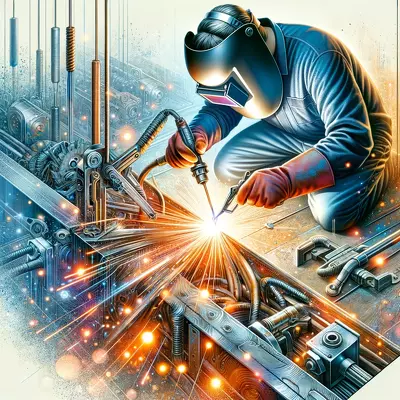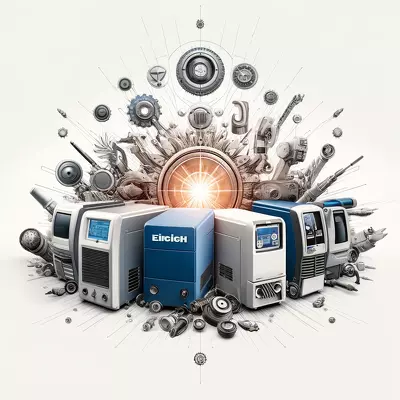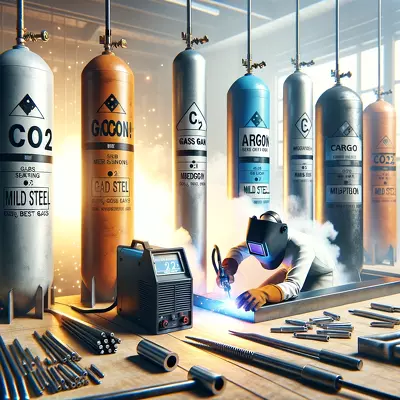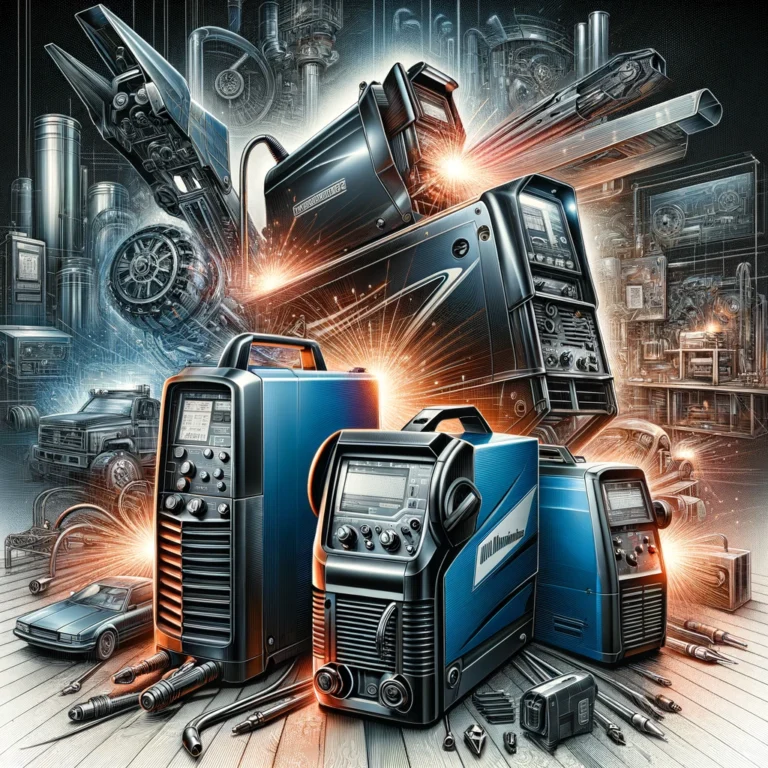Mastering Metal Magic: The Ultimate Guide to Best Welding Techniques for Auto Body Perfection
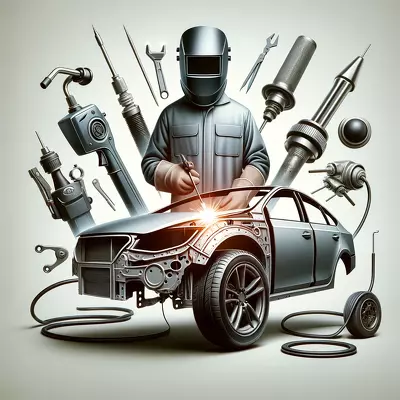
Welding plays a pivotal role in the repair and restoration of vehicles, ensuring structural integrity and longevity. This process requires precision, as the choice of method can significantly affect the outcome. Among the various techniques available, some stand out for their efficacy in handling the delicate materials and complex shapes often encountered in automotive bodywork. The right welding approach can make the difference between a seamless repair and one that compromises the vehicle’s performance and safety.
I. Introduction
Welding is an essential skill in the auto body repair industry, integral to restoring a vehicle’s structural integrity and aesthetic appeal. This article explores the best welding techniques for auto body work, considering various factors like metal type, material thickness, and the desired outcome. It also addresses common challenges and safety precautions, providing a comprehensive guide for professionals and enthusiasts alike.
II. Overview of Welding Techniques for Auto Body Repair
A. MIG Welding
Metal Inert Gas (MIG) welding is a versatile technique favored for its speed and efficiency. It’s particularly suitable for steel and aluminum, making it a go-to option for many auto body repairs. MIG welding allows for deep penetration into the metal, ensuring strong joints and a high-quality finish.
B. TIG Welding
Tungsten Inert Gas (TIG) welding offers unparalleled precision, making it ideal for intricate work and thin materials. Its ability to produce clean, strong welds without excess spatter or warping is highly valued in the automotive repair industry, especially for luxury or classic cars where detail and finish are paramount.
C. Spot Welding
Spot welding is a technique that applies pressure and heat to join metal surfaces without affecting the entire workpiece. It’s especially useful for attaching sheet metal in auto body repairs, replicating factory joints, and maintaining the vehicle’s original appearance.
III. Factors to Consider When Choosing a Welding Method
A. Type of Metal
Different metals require different welding techniques. Aluminum, for example, is best welded with TIG or MIG, considering its conductivity and melting point.
B. Thickness of the Material
The material’s thickness influences the choice of welding technique. Thicker materials may require MIG welding for deeper penetration, while TIG is better suited for thinner, more delicate metals.
C. Desired Strength and Appearance
The final appearance and strength of the weld are crucial. MIG welding is efficient for strong, durable joints, whereas TIG welding is preferred for a polished finish.
IV. Benefits of Each Welding Technique
A. Advantages of MIG Welding
MIG welding is fast, versatile, and user-friendly, making it ideal for a wide range of auto body repairs. It’s particularly effective on thick materials and large jobs.
B. Benefits of TIG Welding
TIG welding offers superior control and precision, resulting in clean, aesthetically pleasing welds. It’s the preferred method for welding sensitive metals like aluminum and magnesium.
C. Strengths of Spot Welding
Spot welding is efficient for joining sheet metal, replicating factory welds, and preserving the original look of the vehicle. It’s less invasive, reducing the risk of warping and other damage.
V. Common Challenges in Auto Body Welding
A. Warping
Warping is a common issue caused by high heat input, which can distort the metal. Proper technique and heat control are essential to prevent this.
B. Corrosion
Welding can compromise corrosion-resistant coatings on metals. Applying appropriate protective measures post-weld is crucial to prevent rust.
C. Aesthetic Concerns
Achieving a factory-like appearance requires precision and skill, especially when welding visible areas. TIG welding is often preferred for its superior finish.
VI. Safety Precautions and Best Practices
A. Protective Gear
Welders should always wear appropriate protective gear, including gloves, eye protection, and flame-resistant clothing, to safeguard against burns, UV radiation, and toxic fumes.
B. Ventilation
Proper ventilation is crucial to remove harmful welding fumes and gases from the workspace, protecting the welder’s health.
C. Handling Flammable Materials
Welding near flammable materials requires caution. Ensuring a clean, safe workspace is essential to prevent accidents.
VII. FAQs
Q: What is the best welding technique for thin auto-body panels?
A: TIG welding is generally the best option for thin panels due to its precision and minimal heat input.
Q: Can I use MIG welding for aluminum auto body parts?
A: Yes, MIG welding can be used for aluminum, especially with a spool gun or push-pull gun to handle the wire feeding.
Q: How do I prevent warping when welding auto body parts?
A: Control heat input using techniques like stitch welding or heat sinks to ensure an even distribution of heat.
Q: Is it possible to replicate factory welds with spot welding?
A: Yes, spot welding can replicate factory welds, preserving the vehicle’s original appearance.
Q: What safety equipment is essential for auto body welding?
A: Essential safety equipment includes a welding helmet with proper shading, flame-resistant clothing, gloves, and proper ventilation.
Q: Can all types of metal be welded using the same technique?
A: No, different metals require different welding techniques based on their properties.
Q: How do I choose the right welding method for my project?
A: Consider the type of metal, the thickness of the material, and the desired appearance and strength of the weld.
VIII. Conclusion
A. Key Takeaways
Choosing the right welding technique is crucial for successful auto body repair, with factors such as metal type, material thickness, and desired outcome playing significant roles. Understanding the advantages and limitations of each method can guide welders in achieving the best results.
B. The Importance of Professional Expertise
Professional expertise must be recognized in auto body welding. The knowledge and skill of an experienced welder ensure not only the structural integrity of the vehicle but also its safety and aesthetic appeal.
IX. Suggested Readings
Expanding your knowledge through literature can be incredibly beneficial before delving into the practical aspects of welding. Here are a few recommended readings that cover the fundamentals and advanced techniques in auto body welding.
- “Welding for Collision Repair” by Jeffus: This book covers various welding techniques with a focus on applications in collision repair, offering insights into both theory and practice.
- “The Art of MIG Welding” by Turner: An excellent resource for beginners and seasoned welders alike, this book dives into the specifics of MIG welding, providing a solid foundation for those looking to master this technique.
- “Advanced Automotive Welding” by Gerry: Aimed at more experienced welders, this book explores advanced techniques and applications, including the latest in welding technology for automotive repair.
- “Automotive Bodywork & Rust Repair” by Mattson: Though not solely focused on welding, this book offers valuable context on how welding fits into the broader scope of auto body repair and restoration.
After exploring these resources, readers will have a comprehensive understanding of the technical, practical, and safety aspects of welding. This knowledge is essential for anyone looking to excel in auto body repair, whether as a hobbyist or a professional.

